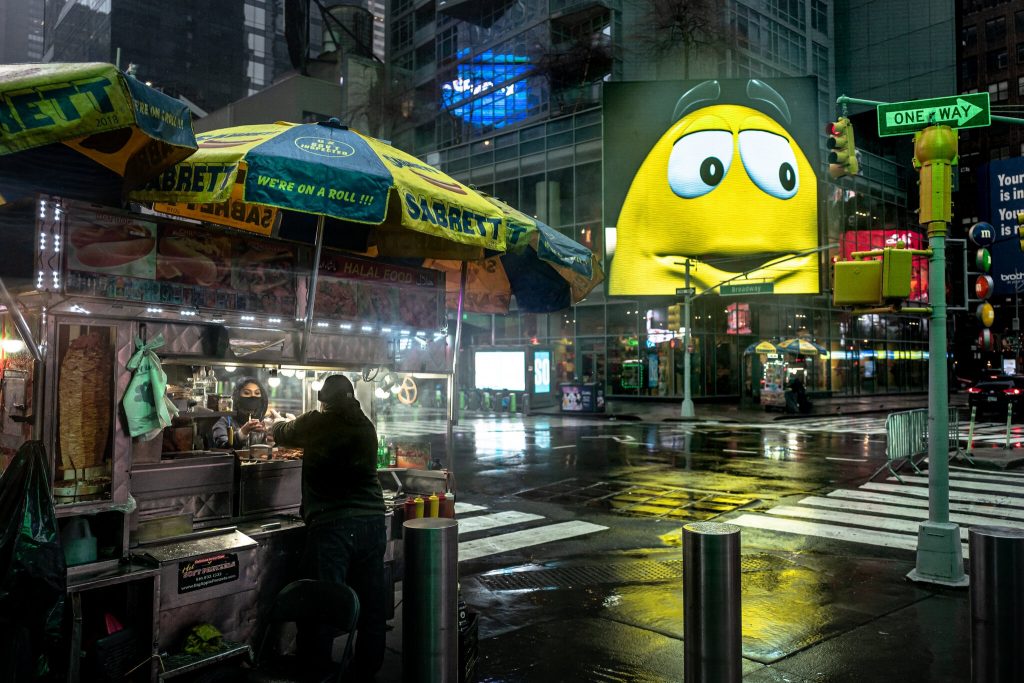A few floors down, MediaMath, an advertising tech company, is planning to abandon its space, a decision fueled by its new remote-work arrangements during the pandemic.
In Midtown Manhattan, Salesforce, whose name adorns a 630-foot building overlooking Bryant Park, expects workers to be in the office just one to three days a week. A nearby law firm, Lowenstein Sandler, is weighing whether to renew its lease on its Avenue of the Americas office, where 140 lawyers used to work five days a week.
A year after the coronavirus sparked an extraordinary exodus of workers from office buildings, what had seemed like a short-term inconvenience is now clearly becoming a permanent and tectonic shift in how and where people work. Employers and employees have both embraced the advantages of remote work, including lower office costs and greater flexibility for employees, especially those with families.
Beyond New York, some of the country’s largest cities have yet to see a substantial return of employees, even where there have been less stringent government-imposed lockdowns, and some companies have announced that they are not going to have all workers come back all the time.
But no city in the United States, and perhaps the world, must reckon with this transformation more than New York, and in particular Manhattan, an island whose economy has been sustained, from the corner hot dog vendor to Broadway theaters, by more than 1.6 million commuters every day.

Commercial landlords in Manhattan entered 2020 with optimism, riding a steady demand for office space, record asking prices in some neighborhoods and the largest construction boom since the 1980s. But that collapsed overnight. Property owners suddenly found themselves chasing after unpaid rent, negotiating repayment plans with tenants and offering deep discounts to fill empty space.
Mayor Bill de Blasio is requiring the city’s own roughly 80,000 municipal office employees to return in early May, in part as a signal to other employers that filling New York’s buildings is a key to its recovery.
“This is an important step for the city, and it’s another important step on the way to the full recovery of New York City,” Mr. de Blasio said.
Still, about 90 percent of Manhattan office workers are working remotely, a rate that has remained unchanged for months, according to a recent survey of major employers by the Partnership for New York City, an influential business group, which estimated that less than half of office workers would return by September.
Across Midtown and Lower Manhattan, the country’s two largest central business districts, there has never been more office space — 16.4 percent — for lease, much higher than in past crises, including after the Sept. 11 terror attacks in 2001 and the Great Recession in 2008.
As more companies push back dates for returning to offices and make at least some remote work a permanent policy, the consequences for New York could be far-reaching, not just for the city’s restaurants, coffee shops and other small businesses, but for municipal finances, which depend heavily on commercial real estate.

“Going back to the office with 100 percent of the people 100 percent of the time, I think there is zero chance of that,” Daniel Pinto, JPMorgan’s co-president and chief operating officer, said in an interview in February on CNBC. “As for everyone working from home all the time, there is also zero chance of that.’’
The loss of workers has caused the market value of commercial properties that include office buildings to plunge nearly 16 percent during the pandemic, triggering a sharp decline in tax revenue that pays for essential city services, from schools to sanitation.
The amount of office space in Manhattan on the market has risen in recent months to 101 million square feet, roughly 37 percent higher than a year ago and more than all the combined downtown office space in Los Angeles, Atlanta and Dallas. “This trend has shown little signs of slowing down,” said Victor Rodriguez, director of analytics at CoStar, a real estate company.
At least one industry, however, is charging in the opposite direction. Led by some of the world’s largest companies, the technology sector has expanded its footprint in New York during the pandemic. Facebook has added 1 million square feet of Manhattan office space, and Apple added two floors in a Midtown Manhattan building.
And the surge in available commercial real estate has actually been a boon for some new businesses that have been able to find spaces at rents that are lower than they were before the pandemic.
“I’ve seen the obituary for New York City many times,” said Brian S. Waterman, the executive vice chairman of Newmark, a commercial real estate services firm. “The office reboarding will start to occur in May, June and July, and you are going to have a much fuller occupancy once we hit September.”
Only 15 percent of workers have returned to offices in New York City and the surrounding suburbs, up slightly from 10 percent last summer, according to Kastle Systems, a security company that analyzes employee access-card swipes in more than 2,500 office buildings nationwide. Only San Francisco has a lower rate.
The sharp declines have prompted developers to rally behind an idea that seemed unthinkable before the pandemic: converting distressed office buildings in Manhattan into low-income housing.
The record vacancy rate has been driven by companies across almost all industries, from media to fashion, that have discovered the advantages of remote work.
Beside the cost savings of operating a scaled-down office or no office at all, modern technology and communications have allowed workers to stay connected, collaborate from afar and be more productive without lengthy commutes. Parents are also clamoring for more flexibility to care for their children.

Remote work, of course, is not without significant downsides.
The blurry lines that already existed between work and personal life have been all but obliterated during the pandemic. Without the time spent commuting in the morning and at night, people are logging on to work earlier in the day and staying connected later into the night.
And despite modern technology and video conferencing capabilities, companies are struggling to foster workplace cultures and make employees, especially new hires, feel welcome and part of a team.
Those concerns have weighed heavily on executives at Kelley Drye, a law firm founded in 1836 in New York, which is moving from Park Avenue near Grand Central Terminal to 3 World Trade Center in Lower Manhattan.
“Zoom and Teams are great,” said Andrea L. Calvaruso, a lawyer who is the chair of the firm’s trademark and copyright group, but she added that “there’s no substitute for sitting down in a beautiful new collaborative and working together without distractions.”

